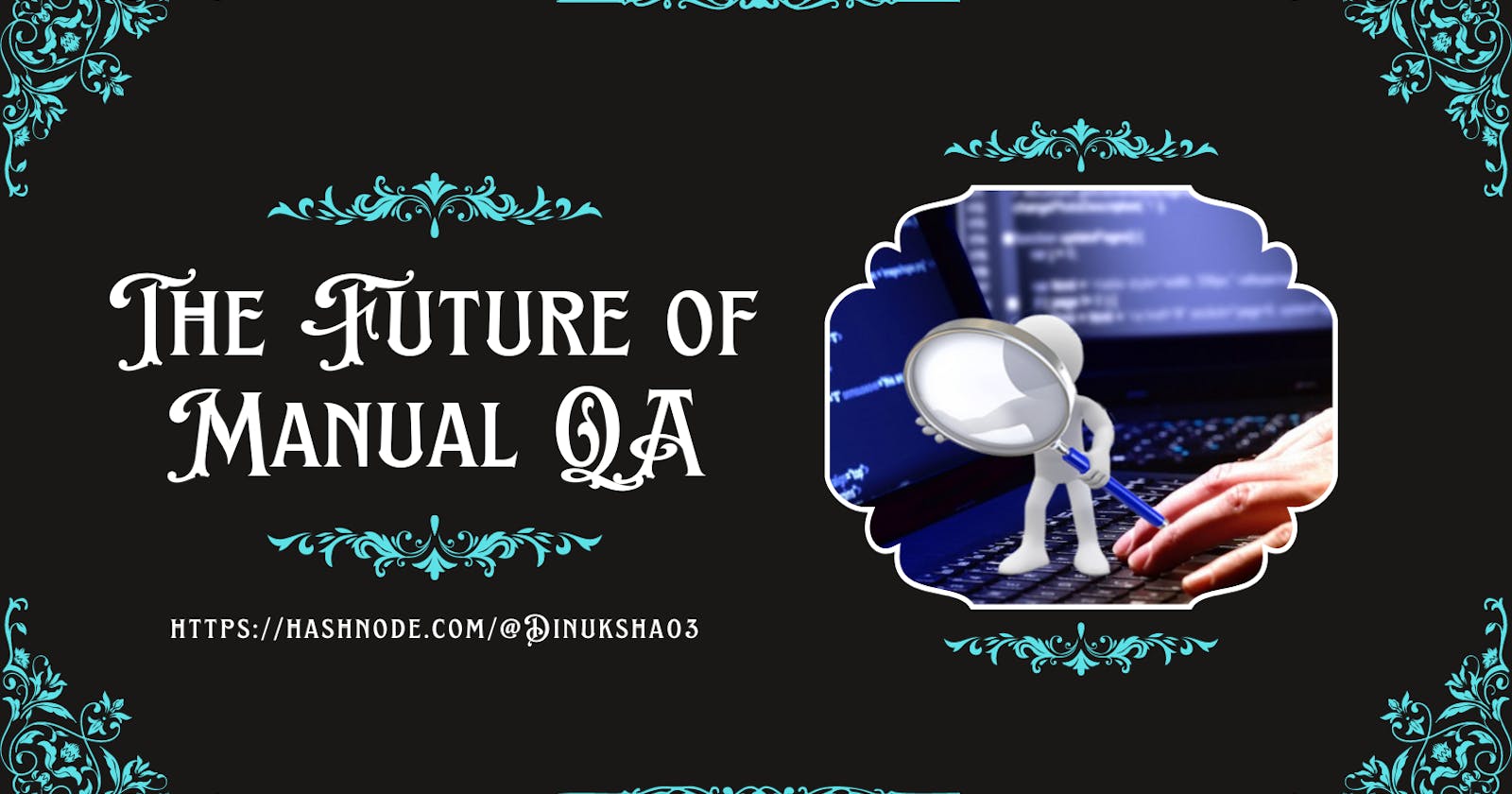🌟 The Future of Manual QA: Adapting Skills in an Automated World 🌟
In an era dominated by automation, the role of manual Quality Assurance (QA) is undergoing significant transformation. While automated testing tools offer efficiency and speed, manual QA remains indispensable for ensuring comprehensive test coverage and exceptional user experiences. In this article, we'll explore how manual QA professionals can adapt their skills to thrive in an increasingly automated world. 💡
1. Embracing Test Automation Complementarity: Rather than viewing automation as a threat, manual QA professionals should embrace it as a complement to their skill set. By understanding the strengths and limitations of automation, manual testers can identify areas where human intervention is most beneficial and focus their efforts accordingly. 🤖💼
2. Enhancing Domain Knowledge and Technical Skills: In addition to traditional testing techniques, manual QA professionals should enhance their domain knowledge and technical skills to remain relevant in today's tech-driven landscape. Understanding the underlying technologies, such as web development frameworks and mobile platforms, enables testers to better assess risks and identify potential areas for improvement. 📚💻
3. Cultivating Critical Thinking and Problem-Solving Abilities: Critical thinking and problem-solving abilities are essential attributes for manual QA professionals navigating the complexities of modern software applications. By honing these skills, testers can efficiently identify and address issues that may arise during testing, ensuring the delivery of high-quality software products. 🧠💡
4. Embracing Shift-Left and Shift-Right Testing Approaches: Shift-left and shift-right testing approaches advocate for early and continuous testing throughout the software development lifecycle. Manual QA professionals should embrace these approaches by actively participating in requirements gathering, collaborating with developers during code reviews, and engaging in exploratory testing to uncover potential defects before they impact end-users. ⏪⏩
5. Championing User-Centric Testing Practices: User-centric testing practices, such as usability testing and accessibility testing, are integral components of manual QA in an automated world. By prioritizing the user experience and advocating for accessibility and inclusivity, manual testers can ensure that software products meet the needs of diverse user populations. 👩🦽👨💻
6. Embracing Continuous Learning and Adaptation: The landscape of manual QA is constantly evolving, with new technologies and methodologies emerging regularly. Manual QA professionals must embrace a mindset of continuous learning and adaptation to stay ahead of the curve. By seeking out opportunities for professional development, attending conferences, and participating in online communities, testers can expand their skill set and remain competitive in the field. 🌱🎓
7. Evolving Role of Manual QA Professionals: With the increasing adoption of Agile and DevOps practices, the role of manual QA professionals is evolving beyond traditional testing activities. Today, manual testers are expected to actively participate in cross-functional teams, contribute to requirements gathering and refinement, and collaborate closely with developers and other stakeholders throughout the software development lifecycle. By embracing this expanded role, manual QA professionals can add even greater value to their organizations and drive continuous improvement in software quality. 💥🌏
8. Harnessing the Power of Test Automation Tools: While manual testing remains essential, manual QA professionals can leverage test automation tools to streamline repetitive tasks and increase testing efficiency. By automating routine tests such as regression testing and smoke testing, testers can focus their time and effort on more exploratory and high-value testing activities. Additionally, automation can help ensure consistent test execution and provide faster feedback to development teams, accelerating the overall software delivery process. 💥💡
9. Balancing Manual and Automated Testing: Achieving the right balance between manual and automated testing is crucial for maximizing test coverage and optimizing testing efforts. Manual QA professionals should assess each testing scenario to determine the most appropriate approach, considering factors such as test complexity, stability of the application, and frequency of changes. By strategically combining manual and automated testing techniques, testers can achieve comprehensive test coverage while maintaining agility and flexibility in their testing processes. 💡👩🏻💻
10. Emphasizing Soft Skills and Communication: In addition to technical skills, soft skills such as communication, collaboration, and empathy are essential for manual QA professionals working in an increasingly automated world. Effective communication and collaboration with cross-functional teams, stakeholders, and end-users are crucial for understanding requirements, clarifying expectations, and advocating for quality throughout the software development lifecycle. By honing their soft skills, manual QA professionals can build stronger relationships, facilitate smoother collaboration, and drive greater alignment towards quality goals. 💫💡
11. Adapting to Emerging Technologies and Trends: The field of software development is constantly evolving, with new technologies, tools, and trends emerging regularly. Manual QA professionals must stay abreast of these developments and adapt their skills and practices accordingly. Whether it's learning about emerging testing methodologies such as shift-left testing or exploring the implications of emerging technologies such as artificial intelligence and machine learning on testing, staying curious and proactive in learning is essential for remaining relevant in the field. 💥👩🏻💻
Conclusion:
The future of manual QA lies in adaptation and evolution. By embracing automation complementarity, enhancing domain knowledge and technical skills, cultivating critical thinking and problem-solving abilities, embracing shift-left and shift-right testing approaches, championing user-centric testing practices, and embracing continuous learning and adaptation, manual QA professionals can thrive in an automated world and continue to deliver value to their organizations.
As manual QA professionals, let's embrace the opportunities that lie ahead and embark on a journey of continuous growth and innovation in the ever-evolving field of software testing. 💪✨
Finally:
☘️**Amidst automation's relentless tide,
Manual QA stands strong, side by side.
With critical thought and problem-solving flair,
We shape the future with meticulous care.**☘️

